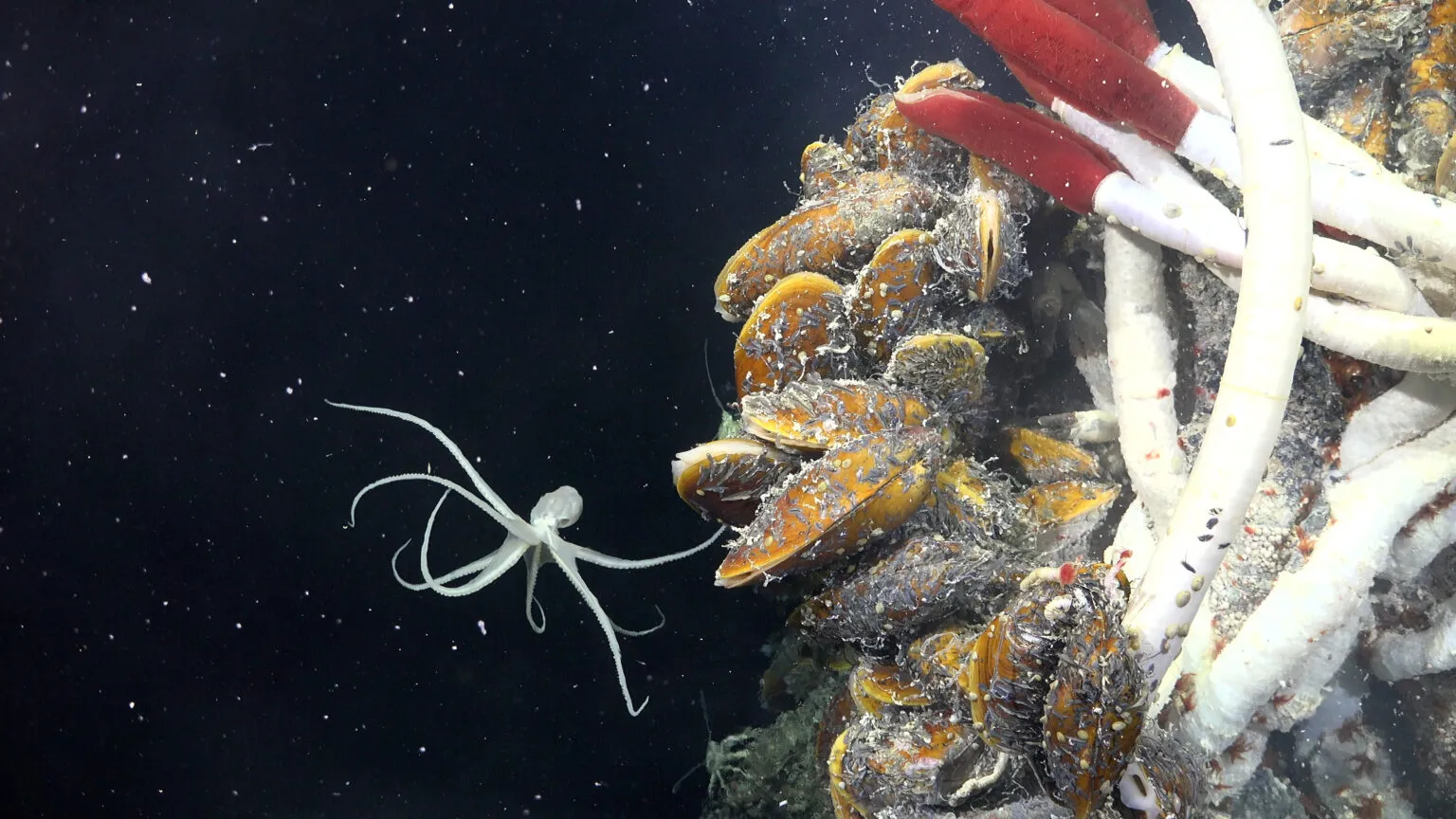By: Connie Cao
A surprising revelation has captivated scientists in the depths of the Earth’s oceans, specifically along the mid-ocean ridges like the East Pacific Rise and the Mid-Atlantic Ridge. At 2500 meters below the sea surface, many new animal species and strange creatures have been unearthed. This discovery has left experts both amazed and intrigued due to the extreme conditions of this environment.
What’s particularly astonishing is the shallow oxygen levels within the Earth’s crust at these depths, coupled with the absence of light. This leads to a fundamental question: how can these organisms possibly survive in what seems like an “uninhabitable” zone?
While some scientists express sheer astonishment at the resilience of these creatures, others consider this phenomenon less surprising. The survival strategy of these animals’ hinges on their ability to feed off bacteria and extract nutrients from the Earth’s crust. They have adapted to endure the immense pressure of the deep ocean through a process known as chemosynthesis. This unique mechanism enables them to convert minerals and various chemicals in the water into the energy required for survival.
Julie Huver, a marine geochemist, and microbiologist at the Woods Hole Oceanographic Institution in Massachusetts, supports this notion. She views the shallow subseafloor, where conditions allow for relatively cooler temperatures, as a crucial environment for microbes, nutrients, and animals.
One of the notable inhabitants of this deep-sea ecosystem is the adult tubeworm. Beginning their life cycle as minuscule larvae, these worms transform into more prominent beings as they nourish themselves on bacteria that thrive on sulfur. In addition to these tubeworms, a range of other intriguing creatures, like snails and slithering worms, have been encountered as scientists continue to delve into the mysteries of this habitat.
These remarkable organisms were discovered thanks to the exploration efforts of a diving robot named Subastian. As it ventured near hydrothermal vents, it uncovered volcanic rocks, providing a glimpse into the world beneath. Geologists identified hollow cavities within these rocks with a glassy texture, where temperatures soared to a remarkable 75 degrees Fahrenheit. The survival of these sea creatures in such extreme heat relies on their ability to enter a state of lowered metabolic activity and reduced movement.
This revelation marks a significant turning point for the scientific community. It offers fresh perspectives on the vast and enigmatic world beneath our oceans. As geologists set their sights on the future, we hope to uncover even more astonishing and bizarre sea creatures, further expanding our understanding of life’s tenacity in the deep sea.











